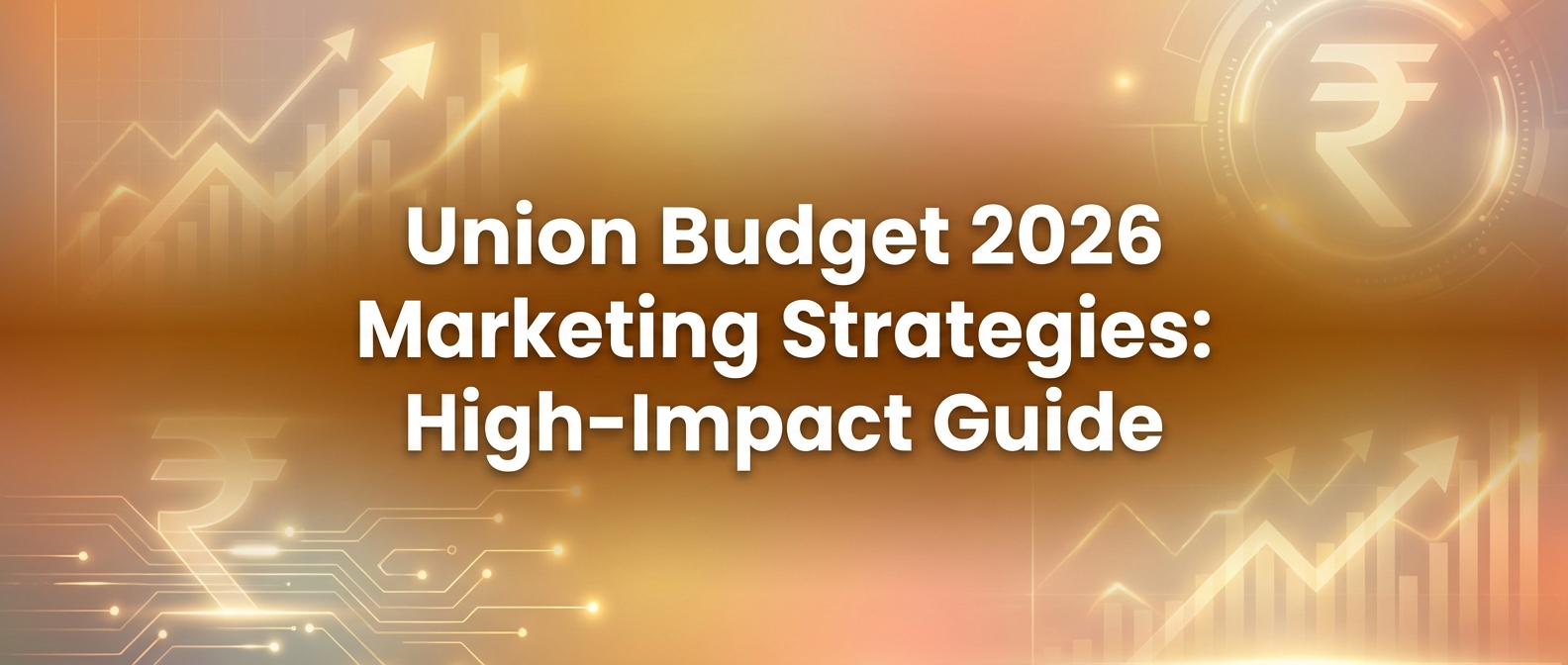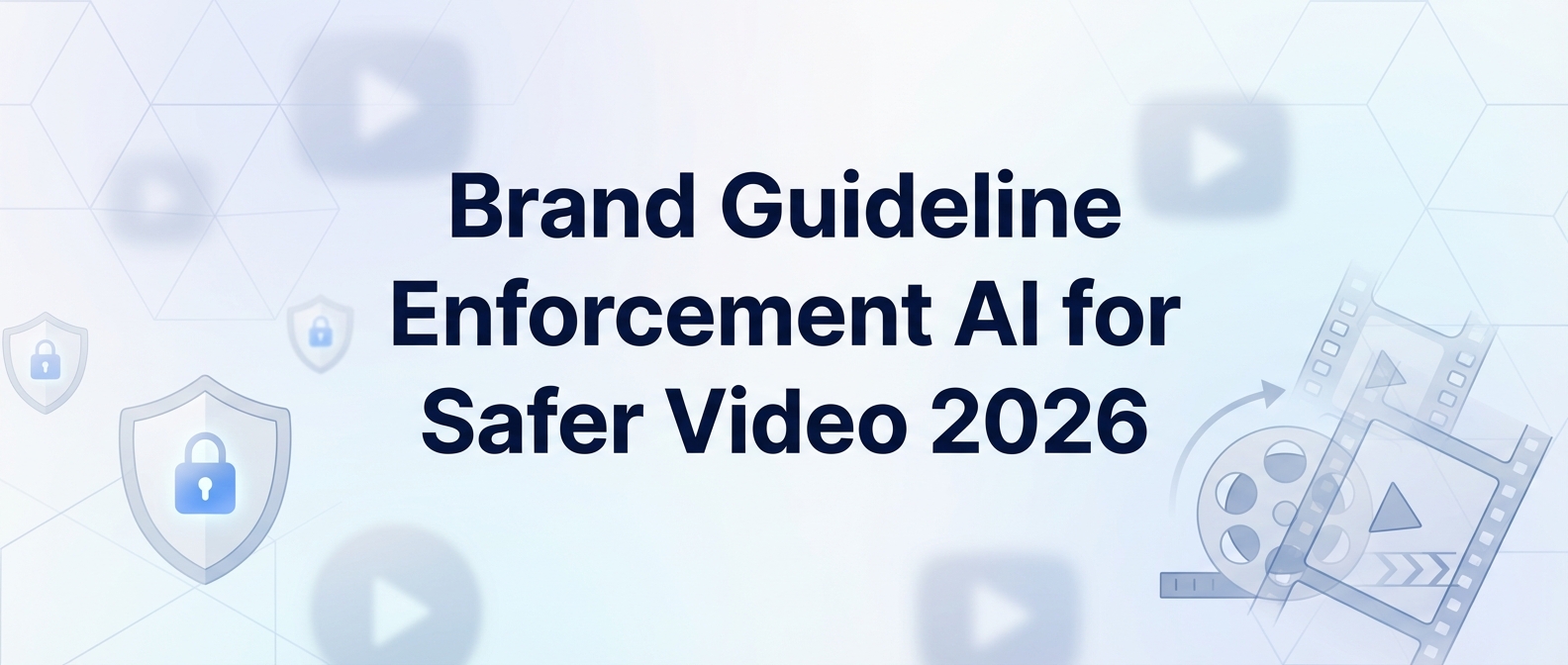Mastering Personalized Video Marketing ROI Measurement: A CFO’s Guide to Measuring Video Campaign Effectiveness
Approx. 12 minutes read
Key Takeaways
- ROI measurement transforms video from a creative expense into a revenue driver, bridging marketing efforts with the bottom line.
- Essential metrics such as CTR, conversion rate, and advanced AI-driven engagement analysis enable real-time optimization.
- Multi-touch and time-decay attribution models accurately credit personalized video’s mid-funnel influence.
- TrueFan AI and similar platforms offer dynamic personalization, audience segmentation, and cost-saving virtual reshoots.
- Real-world results from brands like Zomato and Hero MotoCorp highlight significantly higher engagement, conversions, and brand loyalty.
In today's data-centric business environment, every marketing dollar must be accountable. For Chief Financial Officers and Performance Marketing Leaders, the challenge is not just to sanction budgets but to rigorously track their impact on the bottom line. This is where the discipline of personalized video marketing ROI measurement becomes critical. It transforms video from a creative expense into a predictable revenue driver.
Personalized video marketing ROI measurement refers to quantifying the financial return generated by tailored, one-to-one video campaigns relative to their production and distribution costs. Mastering this metric is no longer optional; it’s essential for CFOs and marketers who need to tie marketing spend directly to revenue and profit objectives. The ability to justify marketing investment with hard numbers is paramount, and emerging technologies are making this easier than ever. Advanced platforms now offer low-latency, API-driven personalization at scale, providing the technological backbone to not only launch these campaigns but also to measure their effectiveness with unprecedented precision.
This guide will walk you through the frameworks, metrics, and strategies required to master the financial oversight of your personalized video initiatives, ensuring every campaign is optimized for maximum financial return.
1. Why Measuring Personalized Video Marketing ROI Matters for CFOs & Marketing Leaders
For the C-suite, Return on Investment (ROI) is the ultimate language of performance. It strips away vanity metrics and focuses on what truly matters: financial impact. For personalized video campaigns, a clear understanding of ROI empowers leadership to make strategic, data-driven decisions rather than relying on creative intuition alone.
ROI = (Revenue from Video Campaign – Cost of Video Campaign) ÷ Cost of Video Campaign × 100%
Applying this formula with precision is where the real work begins. Granular ROI analysis allows you to:
- Enable Data-Driven Budgeting: When you know which campaigns deliver the highest return, you can confidently reallocate funds from underperforming initiatives to those driving real growth. This iterative process of marketing budget optimization ensures capital is always working its hardest.
- Align Marketing with Financial Goals: Measuring ROI translates marketing key performance indicators (KPIs) into profit and loss (P&L) objectives. It bridges the gap between the marketing department and the boardroom, demonstrating how creative efforts directly contribute to the company’s financial health.
- Strengthen Stakeholder Buy-In: A clear, positive ROI is the most compelling argument for marketing investment justification. It provides irrefutable proof to board members, investors, and other stakeholders that the marketing strategy is not just effective but also profitable. As noted in recent analysis, the shift towards measurable, high-impact digital formats is accelerating, making robust ROI models more critical than ever.
Source: www.firework.com
Source: www.socialsamosa.com
2. Video Marketing Analytics: The Core Metrics for Measuring Video Campaign Effectiveness
To calculate ROI accurately, you must first master the foundational video marketing analytics. These core metrics provide the raw data needed to evaluate every facet of your campaign’s performance, from initial reach to final conversion. Tracking them diligently is the first step in measuring video campaign effectiveness.
Here are the essential metrics every marketing leader should have on their dashboard:
- View Count: The total number of times your video has been played. While often considered a “vanity metric,” it’s a fundamental indicator of a campaign’s reach and initial brand awareness.
- Engagement Rate: This is calculated as (Likes + Shares + Comments) ÷ Views × 100%. A high engagement rate signals that your content is resonating with your audience, sparking conversation, and encouraging brand advocacy.
- Click-Through Rate (CTR): Calculated as (Clicks on a Call-to-Action ÷ Views) × 100%. CTR is a crucial metric for lead generation, as it directly measures how effectively your video compels viewers to take the next step.
- Conversion Rate: This is the percentage of viewers who complete a desired action, such as making a purchase, signing up for a newsletter, or booking a demo, calculated as (Conversions ÷ Views) × 100%. This is one of the most direct measures of revenue impact.
- Average View Duration & Retention: This metric tracks the percentage of your video that viewers watch. A high retention rate indicates compelling content, while sharp drop-off points can reveal where your message may be losing its impact.
- Geolocation & Demographic Breakdowns: Understanding where your viewers are located and their demographic profiles (age, gender, interests) allows for powerful audience segmentation. This data helps tailor future content for even greater relevance and impact.
According to a 2025 report from Wyzowl, an overwhelming 93% of marketers state that video marketing has provided them with a good ROI, underscoring the importance of tracking these metrics to optimize that return.
Source: www.socialsamosa.com
Source: wyzowl.com
3. Unlocking True Impact with Conversion Attribution Models
A significant challenge in personalized video marketing ROI measurement is understanding exactly how much credit a video deserves for a conversion. A customer journey is rarely linear; a viewer might watch a personalized video, see a social media ad a week later, and finally convert through an email link. Conversion attribution models help you assign appropriate credit to each touchpoint.
Without the right model, you risk undervaluing your video campaigns, especially those that excel in the middle of the funnel by building consideration and trust.
Here are the key models to understand:
- Last-Click Attribution: This model gives 100% of the credit for a conversion to the very last touchpoint the customer interacted with. It’s simple to track but often undervalues earlier interactions that were critical in building awareness and interest.
- Multi-Touch Attribution (Linear Model): This model distributes credit equally across every touchpoint in the customer’s journey. It acknowledges the contribution of all channels but may not accurately reflect the varying influence of each interaction.
- Time-Decay Model: In this multi-touch model, the touchpoints closest to the time of conversion receive the most credit. It recognizes that interactions that happen nearer to the final decision likely had a greater influence.
For personalized video, which often serves to educate, engage, and nurture leads, multi-touch and time-decay models are typically the most effective. These models provide a more holistic and accurate view of a video’s influence, preventing you from mistakenly cutting budgets for a campaign that is performing a crucial role mid-funnel. Choosing the right model is fundamental to accurate personalized video marketing ROI measurement.
Source: www.firework.com
4. AI Marketing Performance Metrics: Elevating Video Analytics
Standard analytics provide a rearview mirror look at performance. Artificial intelligence, however, provides a predictive, forward-looking lens, transforming how we measure and optimize video campaigns in real time. AI marketing performance metrics move beyond simple reporting to active, automated enhancement.
Platforms like TrueFan AI enable a new level of sophistication by integrating generative AI directly into the campaign workflow. This allows for dynamic optimization that was previously impossible.
Key AI-driven enhancements include:
- Automated Audience Segmentation: AI algorithms can analyze viewer behavior, purchase history, and even language preference to automatically group audiences into hyper-specific segments. This allows for the delivery of personalized video variants tailored to each micro-cohort, dramatically increasing relevance and response rates.
- Predictive Engagement Scoring: Instead of just measuring past engagement, AI can predict which viewers are most likely to convert based on their real-time interactions. This allows marketing systems to prioritize follow-ups with high-value leads or serve them a specific call-to-action designed to close the deal.
- Auto-A/B Testing with Virtual Reshoots: One of the most significant breakthroughs is the ability to conduct A/B tests without expensive and time-consuming reshoots. Using advanced tools like diffusion-based reanimation and voice cloning, you can alter a celebrity’s dialogue in a video to test different offers or messages. The AI seamlessly adjusts lip movements and voice, creating multiple versions from a single original recording, fundamentally optimizing the creative process.
By leveraging these AI capabilities, marketers can refine campaigns on the fly, ensuring that budget is always allocated to the best-performing creative and audience combinations. This elevates video marketing analytics from a passive measurement tool to an active driver of ROI.
5. Marketing Investment Justification: Turning Data into Dollars
For a CFO, every line item on the budget requires rigorous justification. The data gathered from your video marketing analytics and attribution models provides the concrete evidence needed to make a powerful case for continued or increased investment in personalized video.
Here are CFO-focused guidelines for turning performance data into a compelling financial narrative:
- Compare Cost Per Conversion: Directly compare the cost to acquire a customer through personalized video campaigns versus traditional marketing channels (e.g., generic video ads, display ads, or print). If personalized video demonstrates a lower cost per conversion, it’s a clear indicator of its efficiency and value.
- Calculate Return on Ad Spend (ROAS): Isolate the revenue directly attributable to your video channels using your chosen attribution model. ROAS (Revenue from Ad Campaign ÷ Cost of Ad Campaign) provides a clear, channel-specific measure of profitability that resonates powerfully in financial discussions.
- Use Variance Analysis for Budget Shifts: Present data showing how you’ve actively shifted budget away from lower-ROI segments and toward those delivering the highest returns. This demonstrates proactive financial stewardship and a commitment to continuous optimization, proving that the marketing team is managing its budget as a strategic investment portfolio.
By framing your results in these financial terms, you translate marketing success into the language of the C-suite. A 2025 HubSpot report notes that nearly 14% of marketers plan to increase their investment in video marketing, highlighting a growing confidence in its financial returns. Presenting a solid case ensures your organization remains at the forefront of this trend.
Source: www.lemonlight.com
Source: www.hubspot.com
6. Advanced Video Engagement Metrics That Go Beyond Views
As audiences become more sophisticated, our metrics must evolve as well. Moving beyond surface-level data like view counts allows you to understand the true quality of engagement and the specific impact of personalization on viewer behavior. These advanced video engagement metrics are where you find the richest insights.
Consider integrating these next-generation metrics into your analysis:
- Completion Rate: The percentage of viewers who watch your video from start to finish. This is a powerful indicator of how compelling your content is. A low completion rate on a short video is a major red flag that the message isn’t landing.
- Drop-Off Points: Analyzing the exact timestamps where viewers stop watching can provide invaluable feedback. A consistent drop-off at the 10-second mark might indicate a weak opening, while a drop-off during a product demo could suggest it’s too complex or not relevant enough.
- Personalization Impact Score: This is a crucial metric for justifying investment in one-to-one video. A/B test a generic video against a personalized one and measure the lift in key metrics like completion rate or CTR. A high impact score (e.g., a 40% higher watch-through rate when a viewer’s name is mentioned in the first 5 seconds) provides a direct ROI link for personalization technology.
With modern martech, these metrics are more accessible than ever. TrueFan AI’s 175+ language support and Personalised Celebrity Videos, for example, are delivered via low-latency rendering and real-time APIs. This infrastructure not only enables personalization at scale but also allows for the precise testing and measurement of different personalization variables, helping you fine-tune your campaigns for maximum retention and impact.
7. Strategic Marketing Budget Optimization
The ultimate goal of measuring video campaign effectiveness is to continuously optimize your marketing budget for higher returns. This isn’t a one-time analysis but an iterative cycle of testing, learning, and reallocating resources to what works best.
A strategic approach to marketing budget optimization involves several key steps:
- Start with Pilot Cohorts: Before launching a massive campaign, test different personalized messages, offers, and creative variations on smaller, representative audience segments. This A/B testing phase minimizes risk and provides crucial data on what resonates most.
- Scale Spend Toward High-ROI Segments: Once the data from your pilot programs comes in, analyze the ROI for each cohort. Aggressively scale your spending on the segments and messaging that deliver the highest return, while pulling back from those that underperform.
- Reinvest Savings from AI-Driven Efficiencies: AI tools create significant operational savings. For instance, using virtual reshoots to create ten ad variations eliminates the cost of nine additional production sessions. Reinvest these savings back into the campaign, perhaps by expanding into new audience segments or conducting more personalization tests.
This disciplined approach ensures your marketing budget is a dynamic and highly efficient growth engine. This strategy is becoming mainstream, with industry analysts like Gartner predicting that by 2025, enterprises will reallocate up to 30% of their digital advertising budgets to AI-powered video and other intelligent marketing technologies.
8. Real-World Personalization ROI: Case Studies
The theoretical value of personalized video marketing is compelling, but its true power is demonstrated through real-world application. Solutions like TrueFan AI demonstrate ROI through campaigns that have delivered measurable business outcomes at an unprecedented scale for some of India’s biggest brands.
Here are a few standout examples of personalization ROI case studies:
- Zomato’s Mother’s Day Campaign: To create an emotional connection with users, Zomato enabled customers to send a personalized video greeting to their mothers from a celebrity. The platform generated a staggering 354,000 unique videos in a single day. The result was a viral social media campaign with view rates 3 times higher than the industry average, driving both brand love and a significant spike in orders. Read more.
- Hero MotoCorp's Festive Greetings: To engage its vast customer base during the festive season, Hero MotoCorp sent 2.4 million personalized video wishes from celebrities. These videos addressed each customer by name and mentioned their local dealership. The campaign successfully drove offline action, with dealership visits increasing by 12% in the post-campaign period.
- Goibibo's Personalized Travel Nudges: To re-engage users who had searched for a trip but not booked, Goibibo sent WhatsApp messages featuring a personalized video from cricketer Rishabh Pant. The video mentioned the user’s name and their searched destination. This hyper-relevant nudge led to a 17% lift in WhatsApp message read rates and a measurable increase in conversions.
- Cipla’s Doctor’s Day Initiative: To show appreciation for the medical community, Cipla sent 6,400 personalized thank-you videos from actress Vidya Balan to doctors across India. Each video addressed the doctor by name. This highly personal gesture strengthened B2B relationships and generated widespread organic PR as doctors shared their unique videos within their networks.
These cases prove that personalized video is not just a novelty; it is a powerful tool for driving engagement, offline action, and ultimately, a strong, measurable personalized video marketing ROI.
Frequently Asked Questions
1. What is the most important metric for measuring video marketing ROI?
While conversion rate is often seen as the most important because it ties directly to revenue, the “best” metric depends on the campaign’s goal. For a brand awareness campaign, engagement rate and completion rate might be more critical. For lead generation, CTR is paramount. A holistic approach that considers a blend of these metrics provides the most accurate picture.
2. How long should a personalized marketing video be?
There’s no single answer, but data suggests shorter is often better, especially for top-of-funnel content. For social media, aim for 15-60 seconds. For explainer or demo videos, 2-3 minutes can work if the content is highly engaging. The key is to analyze your average view duration and drop-off points to see what your specific audience prefers.
3. How can I measure the ROI of a video that doesn't have a direct call-to-action?
For awareness-focused videos, you can use multi-touch attribution models to see how they influence later conversions. You can also measure brand lift through surveys (asking viewers about brand recall before and after the campaign) or by tracking metrics like branded search volume and direct website traffic during the campaign period.
4. How does AI help in improving video marketing ROI?
AI improves ROI in two main ways: efficiency and effectiveness. It improves efficiency by automating tasks like audience segmentation and enabling virtual reshoots, which drastically cut production costs. It boosts effectiveness by using predictive analytics to deliver the right message to the right person at the right time, leading to higher engagement and conversion rates. Platforms like TrueFan AI use generative AI to accomplish both at scale.
5. Is personalized video marketing too expensive for smaller businesses?
While large-scale enterprise campaigns require significant investment, the technology is becoming more accessible. The key is to start small with a pilot program targeting a high-value customer segment. By proving ROI on a smaller scale, you can build a strong business case for expanding the program. The focus should be on the return, not just the cost.
Conclusion: Take Command of Your Video Marketing ROI
The era of treating video marketing as an unquantifiable creative expense is over. As we’ve seen, a disciplined approach to personalized video marketing ROI measurement empowers CFOs and Performance Marketing Leaders to transform their video strategy into a predictable and highly profitable engine for growth.
By implementing robust video marketing analytics, leveraging sophisticated conversion attribution models, and embracing the power of AI-driven insights, you can connect every rupee of your marketing spend to real business value. The success stories of brands like Zomato and Hero MotoCorp prove that when done right, personalization at scale delivers returns that far exceed those of traditional campaigns. Learn more here.
The next wave of ROI growth is here. It’s time to move beyond generic messaging and unlock the power of one-to-one communication.
Ready to see what hyper-personalized video can do for your bottom line? Contact TrueFan AI to pilot an enterprise campaign with our advanced APIs and start measuring the powerful returns today.




